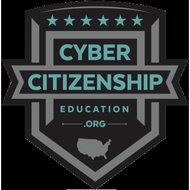
(View Complete Item Description)
Verifying social media posts is quickly becoming a necessary endeavor in everyday life, let alone in the world of education. Social media has moved beyond a digital world which connects with friends and family and has become a quick and easy way to access news, information, and human interest stories from around the world. As this state of media has become the "new normal," especially for our younger generations, we, educators, find ourselves charged with a new task of teaching our students how to interact with and safely consume digital information.The following three modules are designed to be used as stand-alone activities or combined as one unit, in which the lessons can be taught in any order. "Who Said What?!" is a module focusing on author verification. "A Picture is Worth a Thousand Words'' is a module devoted to image verification. "Getting the Facts Straight" is a module designed to dive into information verification. Lastly, there are assessment suggestions to be utilized after completing all three modules.
Material Type:
Activity/Lab,
Assessment,
Diagram/Illustration,
Homework/Assignment,
Lesson,
Lesson Plan,
Module,
Unit of Study
Authors:
Sandra Stroup,
Amanda Schneider,
Megan Shinn



















